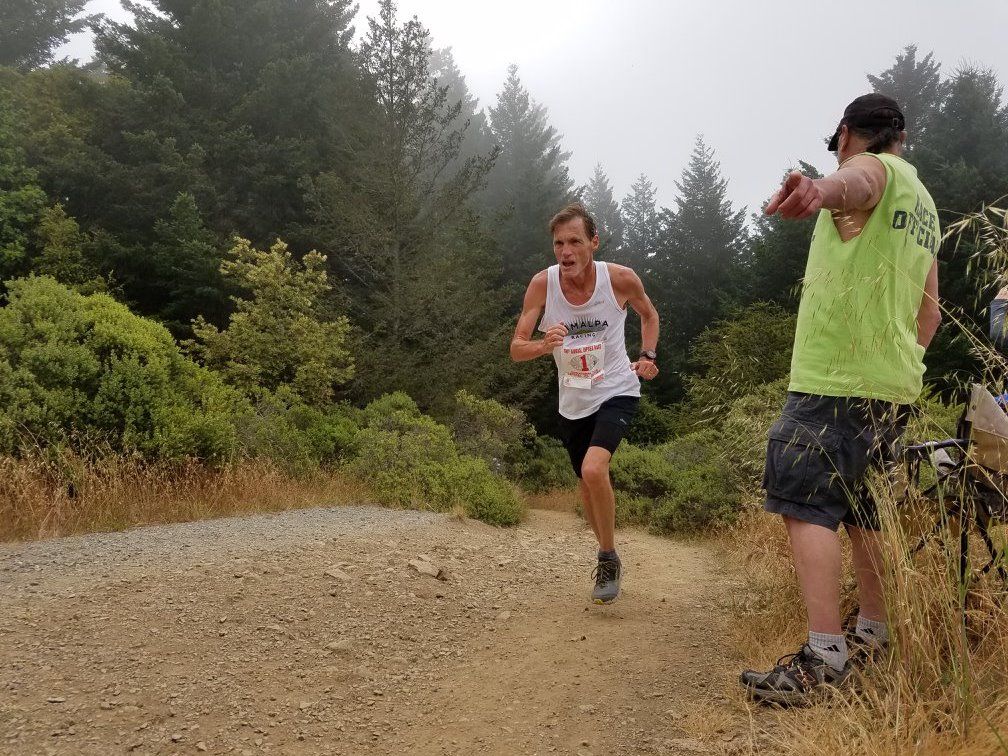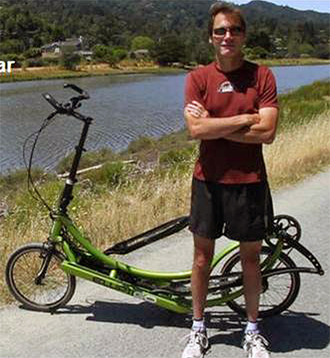In the 2016 Chicago Marathon, Brian Pilcher rewrote the record books as he passed through nearly every major checkpoint. En route to an American 60-64 age group record of 2:42:42, he established new U.S. 60–64 marks for the half marathon (1:16:54), 25K (1:31:49) and 30K (1:50:53). The latter two are also new world records. And all of that came just seven days after he broke the American 60-64 record in the 5K, clocking 16:39. For his efforts, USA Track and Field named Pilcher its Athlete of the Week.
 Still, Pilcher wants more. He has his sights on the 60-64 world record of 2:36:30, which he will chase in January at the Houston Marathon.
Still, Pilcher wants more. He has his sights on the 60-64 world record of 2:36:30, which he will chase in January at the Houston Marathon.
In his training for Chicago, Pilcher told Runner’s World he was running 70-80 miles a week and adding another 80 miles of ElliptiGO riding. “I am unbelievably fit right now,” Pilcher said.
But it wasn’t always that way. After a stellar season in 2009, when Running Times named Pilcher Runner of the Year, intense hip and knee pain stopped him in his tracks. When he could no longer run without pain, he searched for alternatives and found the ElliptiGO elliptical bike.
After using the ElliptiGO to rehab through his injury, Brian was able to get back to competitive racing and win national 5k and 10k championships just three months after returning to running. Download a brief case study on Pilcher’s injury and rehab routine to see how he went from injured runner to National Champion in just three months.
In this short Q&A, Pilcher shares tips on how runners can benefit from adding ElliptiGO rides into their training program during times of both injury and health.
ElliptiGO: You got to the point where you couldn’t run without pain. What was it like riding an ElliptiGO bike in place of those runs?
Pilcher: The amazing thing about the ElliptiGO is that no matter the injury, I never have issues ElliptiGOing. The lack of impact combined with the legs aligned in a consistent stride motion keeps it from irritating tweaks and injuries. It allows you to build fitness without exacerbating the injuries.
ElliptiGO: What tip would you give to runners who are considering adding ElliptiGO training into their mix?
Pilcher: The biggest uses I have for the ElliptiGO are in recovery mode and in adding long runs. I would much rather have a 2-3 hour ElliptiGO ride than an 8-mile junk mile recovery run. Long ElliptiGO rides do not supplant your long run; however, they do provide a lactate “shuttle” for when you do run or race long. That is when you build up too much lactate and your body wants to slow you down. If you have built up ElliptiGO muscles, they shuttle the excess lactate to those muscles and recycle them. When I have put in serious ElliptiGO time, I feel like I could run literally forever.
ElliptiGO: What are your goals for the next year?
Pilcher: Run a 2:36 marathon in Houston in January to get the world record for 60+; run 33:40 in the 10k (which would be an American 60-64 record); and get another Dipsea win. [Editor’s note: Pilcher has won the famously grueling Dipsea Race three times, including the last two.]
ElliptiGO: What does your typical marathon training program look like?
Pilcher:
 Sunday: 20-mile run (2:15) then grab a PB&J and hop on the ElliptiGO for another 2:15
Sunday: 20-mile run (2:15) then grab a PB&J and hop on the ElliptiGO for another 2:15
Monday: 1-hour run
Tuesday: Hard workout – 3 miles easy, 2 miles at Threshold pace (5:35), 8 miles easy, 2×2 miles at Threshold pace with 2 min. rest, 3 miles easy = 20 miles total with 6 miles at threshold pace
Wednesday: ElliptiGO ride (2:15)
Thursday: 1- hour run
Friday: 4 miles easy, 2 miles at Threshold pace (5:35), 16×200 meters in :32-:33 seconds, 4 miles easy
Saturday: 1-hour run
“Rinse and repeat” with small changes in the Tuesday and Friday workouts. Each week comes out to about 9 hours running and 4:30 ElliptiGO rides.
Learn how other runners and athletes use ElliptiGO training to recover from and prevent injuries.

